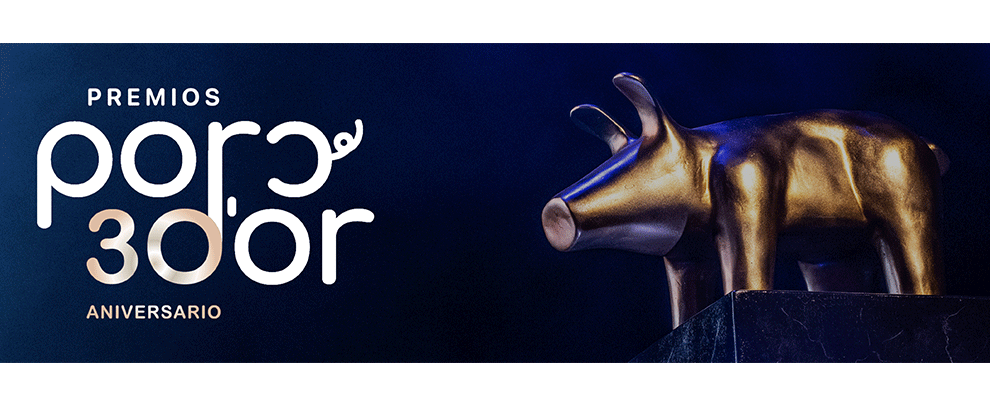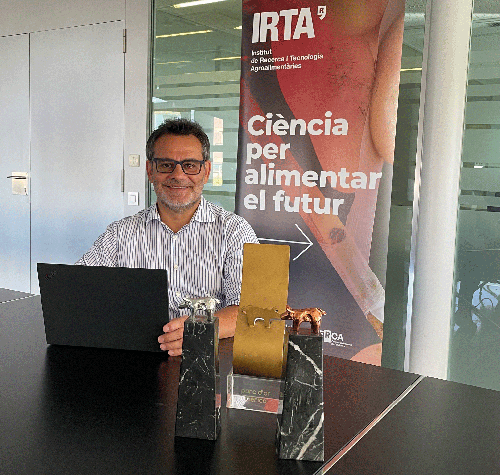Blog
Blog

The Porc d’or awards celebrate their 30th anniversary
17 of October of 23 - News
Perseverance and hard work have allowed the organisation of the Porc d'Or Awards to be able to celebrate the 30th anniversary of these awards this year, which have been recognised as an important event for the industry. We spoke with Carles Rosell, head of the Animal Production area of IRTA, to learn about some novelties this special edition has in store for us, with changes in the organisation and the incorporation of awards that consider new efficiency and sustainability indicators.

Carles Rosell, head of the IRTA Animal Production area. Photo: IRTA.
The 30th edition of the Porc d'Or Awards is celebrated On October 20. Will there be any special events or activities to commemorate this anniversary?
We want it to be a memorable holiday because we commemorate 30 years of the awards, which means that things have been done very well for so long to maintain distinctions. In this sense, we would like to highlight the commitment of the Ministry of Agriculture, Fisheries and Food, Anprogapor, the interprofessional (Interporc) and all farmers and entrepreneurs in the industry. To celebrate the 30th anniversary, we decided that the gala would be held in Lleida because it was in this city where the awards were born and where the BDporc, the first technical database of the Spanish pork industry, was created. There will be news, and we can announce that one of the most important will be the new design of the statuettes for the winners, more modern, adapted to the recent times and very representative of the industry. On the other hand, the gala will take place a month earlier than usual to celebrate the party outside the Llotja building in Lleida. The sponsors of the awards will be able to enjoy matching activities, such as a visit to La Seu Vella in Lleida, and all those attending the gala will be able to enjoy the catering prepared by Nandu Jubany, a top chef with a Michelin star, so we hope it will be an unforgettable event. It is estimated that about 1,000 people will attend.
As for the organisation, in the Iberian gala, there already were changes in the companies that took the lead. What have these changes been, and what have they meant for the awards?
Yes, this year, we are fortunate to have a new Main Sponsor, Ceva, and five Premium Sponsors, including Rotecna, which has been necessary to further boost the awards, along with the usual sponsors and collaborators. These changes indicate a new era and a different way of doing things. We were looking for partners involved in sponsoring the Porc d'Or Awards, and that would give us stability over time while being partners with whom we could do and create other activities beyond the awards.
What is the will of the new organisation with the Porc d'Or Awards?
The awards have always aimed to recognise the excellent work of farmers and companies involved in pork production. And that is still our goal, although we must remember that farmers and companies have been transformed, as have technical indicators. For this reason, our commitment is to continue appreciating the industry, rewarding efficiency, good work and sustainability, but considering and progressively incorporating new gauges adapted to current times and the needs of the industry.
Are there any changes in the prizes that will be awarded?
Yes, there are three novelties. First, the Ministry's award features new parameters and will be renamed the Sustainability Award. In addition, a new prize, the OneHealth Award, will be presented by our Main Sponsor, Ceva, and will reward the farmer and veterinarian responsible for the winning farm. Finally, there will be another new award for all categories promoted by IRTA, which will be the Lactation Management Award, with which we want to recognise survival thanks to the excellent management of the farmer during lactation. The latter will be a single prize per category.
How many farms are nominated in this 30th edition of the awards?
In this 30th edition of the Porc d'Or Awards, 525 farms were evaluated, analysing 804,300 sows. In each of the four categories, as in past editions, white-layer pig farms will be awarded based on the technical-productive criteria of Longevity, Farrowing Rate and Numerical Productivity. In this way, and taking into account that a gold, a silver and a third bronze statuette are awarded for each criterion and category and, for the first time this year, a gold for each category in Lactation Management, there are a total of 108 nominations and 40 awards.
Due to the technification of the industry, is it becoming increasingly difficult to determine which farms are worthy of the awards?
It has always been difficult, but in the end, the advantage of these awards is that we have a very professional jury, which interprets the technical and productive indicators well. However, there is indeed more and more competition, and the differences between farms are smaller, thanks to technification, the professionalisation of the industry and genetics. The initiative works very well, and the farms have a very high level of efficiency and professionalism.
What are the future challenges for the Porc d'Or Awards?
The awards reflect the work of a whole year, which is reflected by entering the technical data in the database of the Bdporc, which we must improve and expand both at the level of the software itself and the indicators that we currently have and collect. We know that it is not easy because it is a challenge that requires technification, both in terms of our database and in the farms. However, we can say that we, from IRTA, are already working and investing significantly to make these improvements in the database, always in a consensual manner with the industry. For example, we want to expand and record more data on fattening, consumption, environmental, health, etc. From here, we would like to transfer and reflect these changes in the awards, taking into account new markers that are more adapted to the reality of the industry and always focused on rewarding the work of farmers and efficiency, but also the sustainability of the sector.






